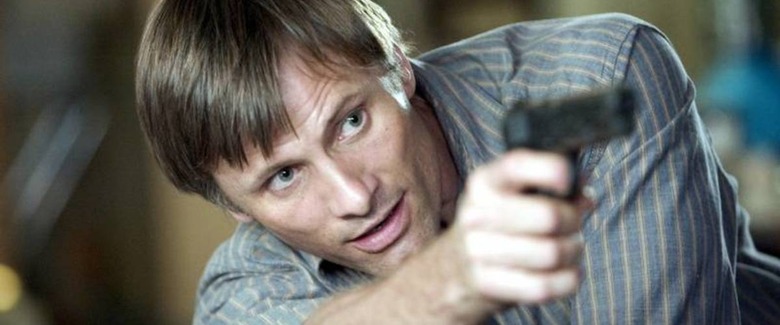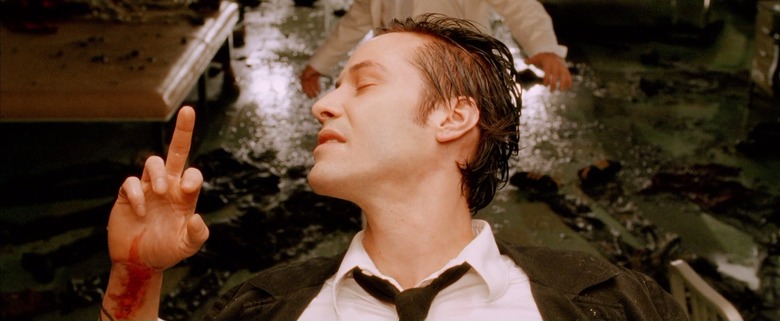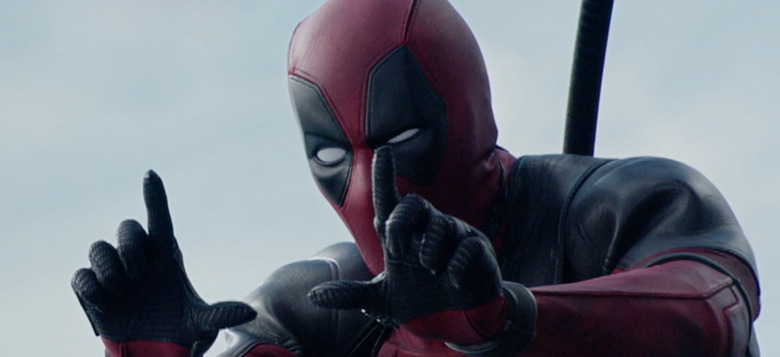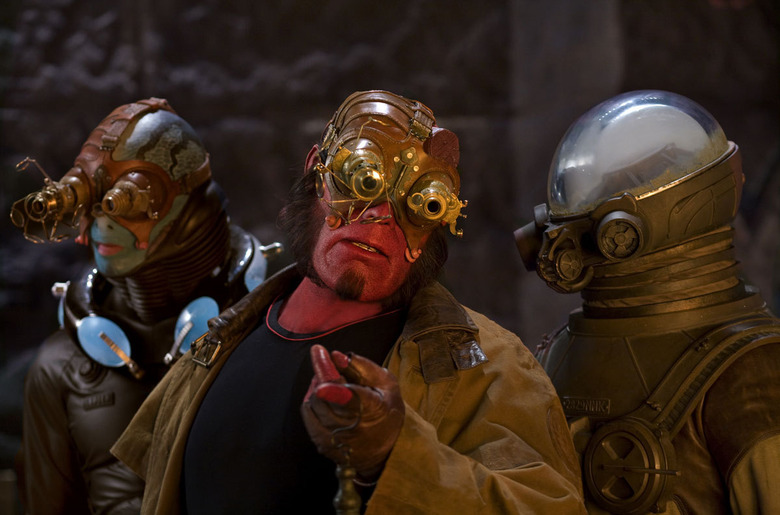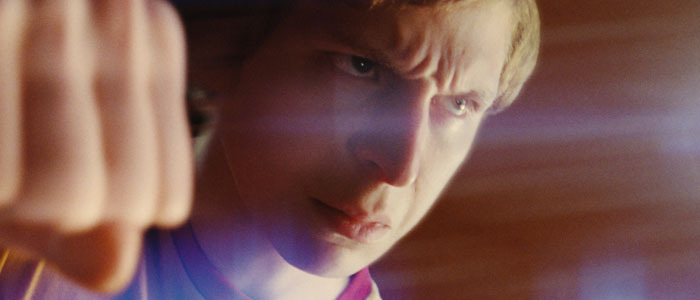Five Great Audio Commentaries For Five Comic Book Movies
A trend in audio commentaries for comic book movies? They're often much lighter than, say, a historical drama or a war movie. The participants are typically jovial, and perhaps it's because they finally see the light at the end of the tunnel after a two or three experience, or maybe even more than that in some instances.
After spending a few years on a project, and coming out of that high-stakes process with a movie they're actually proud of, the filmmakers in commentary tracks for comic book movies seem more than happy to go down memory lane. If you're in the mood to get some insights into some of the finer comic book adaptations from the past few years, here are five recommendations on where to get started.
A History of Violence (Featuring director David Cronenberg)
Why Listen: Cronenberg is alone in his audio commentary – not the first time – and like plenty of other great filmmakers, he's never at a loss for words on his own. Right from the beginning, he hooks us by talking about the film's startling opening shot. Cronenberg explains in detail why the camera is where it is. What angles to frame star Viggo Mortensen from was a fine line to walk, actually. From one angle, he'd be too much like Joey, in other too much like Tom, the two versions of the same man he plays in the movie. Cronenberg also opens up about bringing body horror to this comic book adaptation, making the violence up close and personal and all the more disturbing.Days on the Job: We all know Viggo Mortensen is an exceptional actor. To get into character for the film, the Eastern Promises star did something Cronenberg had never seen an actor do before:
You see that fishing poster in the background [in the diner]? Viggo bought that. Viggo bought a lot of things for this set when he went on his travels through the midwest. He was doing some research into the tone of who Tom might be, where he might come from, and the things he might surround himself with. A few of the things in this diner and in the Stahl's home were actually set decorated by Viggo himself [Laughs]. It's a very unusual thing. I've never actually met an actor who bought things for the set before, I have to say. It was so he could feel comfortable in his character, and feel he had touchstones for his character. Everywhere he'd look there'd be something that is Tom, and it'd keep him in the groove for his character.
What's Said: "What can be more iconic than a cheerleader?" Cronenberg asks, talking about the (sex) scene you already know he's talking about:
As a part of that American mythology, these characters can play with it themselves. They know they're the cheerleader, high school jock, or high school nerd, perhaps. The nerd's fantasy is he'll get the cheerleader, the prom queen, and that's the past they're creating for themselves. Maria says, 'We never got to be teenagers together.' This is the fantasy they're playing in.
Of course, in a shot like this [close-up of them gazing], you can see that they are in fact a passionately in love married couple. I must say that there arent's too many movies that you see the sex scenes are exclusively between a married couple. A couple who've been married at least 20 years and have children together. It's not too common in movies, especially American movies. The attitude is once you're married your sex life is over. Obviously not true.
Trivia: That sex scene is also, as Cronenberg was told, the first American studio movie depicting "what the French call soixante-neuf" (be careful if you Google that). If that's the case, then he's "very proud to have broken through that barrier."
Constantine (Featuring director Francis Lawrence and producer Akiva Goldsman)
Why Listen: This audio commentary has far more jokes than the movie itself. That's not uncommon, but Lawrence and Goldsman are clearly having a ball discussing the film. A lot of thought went into the world, which they wanted to present without a hint of irony. If you want to know how to convincingly build a comic book world with some subtle touches, this commentary offers up some good suggestions. A part of the joy of this commentary is, with most of the dialogue drowned out, watching how much Lawrence accomplishes visually. It's especially stunning how he frames his leading man. Keanu Reeves is, especially in a close-up, an innately watchable screen presence, communicating quite a bit without saying much.A Day on the Job: There's no romance in Constantine. There's a trust that grows between Constantine and Angela Dodgson (Rachel Weisz), but that's all the film needs. Anything more than that wouldn't have been believable. While there's no kiss in the rain, the sequence Lawrence calls the film's "equivalent of a sex scene," where "she's bared all for him," is when he submerges her underwater so that she can experience hell.Constantine doesn't have too many lighthearted jokes, so when it came time to finally shoot a joke, everyone was nervous, Lawrence says:
This was in our second week of shooting; it might've day seven or eight of shooting. This was one of the first jokes we got to in the movie. "Do I have to take my clothes off?" Everyone on set suddenly got very concerned. They didn't think I covered the joke properly. I remember I said, "Just wait for the dailies." We all watched the dailies, and they got an audible laugh, but I remember getting speeches. "Make sure we get the jokes." Now it's our biggest laugh in the movie that nobody thought existed.
What's Said: Constantine doesn't have the most winning or sparkly personality for a comic book hero. He's a severely damaged hero Lawrence and Goldsman responded to right away. For them, the character allowed them to venture off into dark, sometimes unusual places. Says Lawrence:
This is also why I also loved this story: this movie goes to places you wouldn't believe or expect. You get to this moment where your hero props himself up against a couple of doors and slashes his wrists. You're just thinking, "What the hell is going on?"
Adds Goldsman:
If your lead character's triumphant return is to kill himself, you know you're in uncharted territory.
Trivia: The shot where Constantine is dead and the camera zooms in on his face and then pans up to show John entering heaven in one shot was influenced by What Lies Beneath, where Zemeckis "did a shot that dollied along the floor and then went down a level beneath the floor."
Deadpool (Featuring actor Ryan Reynolds and screenwriters Rhett Reese and Paul Wernick)
Why Listen: Actually, this commentary would make for fine follow up to Constantine. The trio here strike a similar tone: light, breezy but thoughtful. There's plenty of anecdotes and info to go along with some big laughs. Considering how long the three of them worked on this film, they have plenty to say about the experience, which lasted around a decade for Reynolds. They never run out of love talking about this character and everything they got away with on the project.A Day on the Job: When Wade unveils his new face to Weasel (T.J. Miller), it's great quip after great quip from Miller. The scene was actually a reshoot picked up six months after shooting. Says Reynolds:
You could've cut together an entire film of just T.J. Miller doing alternate jokes here. The only reason we stopped shooting this scene is because T.J. eventually had to go to sleep.
Says Reese:
We also shot this scene twice, because we had to alter some key information in the middle of it. This whole scene was working great, and then we had to go back and we were worried if we'd recapture the magic. Thanks to Ryan and T.J'.s comic chemistry, it worked out.
What's Said: Reynolds calls the editing of the movie a "rollercoaster." They tried all sorts of different options, including a disastrous linear cut. The tone was a part of the challenge in the editing, which is why they removed this one sequence Reese describes:
This scene [when Wade rises from ashes] was originally followed by a sequence in which Wade tested out his invulnerability by committing suicide in some ridiculous ways. Oh gosh, it made us laugh. He was throwing himself out of subway cars and throwing himself in a lion enclosure and all kinds of self-destructive things. Ultimately, for the tone it made sense to keep this reasonably serious.
Trivia: Somebody at 20th Century Fox was interested in New England Patriots player Rob Gronkowski playing Colossus.
Hellboy II: The Golden Army (Featuring writer-director Guillermo del Toro)
Why Listen: You're always in good hands with Guillermo del Toro. He's nothing but passionate and it comes through every time you listen to one of his tracks. While speaking from the heart, he doesn't leave a single stone unturned. With this fantasy film, he saw himself making the "anti-summer movie." When the demon kills the last of its kind, a beautiful and frightened creature doing what it was told, it's not a "rah-rah" moment where the hero saves the day and kills the bad guy. del Toro shares all the technical details you crave, but his insights into Hellboy and his moral dilemma are every bit as engaging.A Day on the Job: del Toro, like most fans of Hellboy II, can't get enough of Hellboy and Abe singing Barry Manilow's "Can't Smile Without You." While Hellboy is a demon who prefers the sounds of Al Green and Tom Waits, after a few beers stir up some sentimental thoughts, del Toro knows it's a song he'd sing. This day reminds the filmmaker of how Perlman and Jones helped humanize these fantastical characters under some notable restrictions:
One shooting day reminds the filmmaker of how Perlman and Jones helped humanize these fantastical characters under some tough restrictions:
Shooting this scene was truly one of the great days of a shoot of my entire life. Ron and Doug – Doug Jones is an absolutely genial performer, vocal, physical, you name it... found nuances and little touches. People don't realize, these two guys have, if anything, millimeters of their real face exposed. Same with Johann, who is performed by three actors, all very talented. Each has their own talent. John [Alexander] plays Johann and the Goblin [towards the end]...
These guys perform without a face. They are so gifted. Everything about this movie should not be attempted. It's an absolutely insane movie to attempt, which sometimes has a scene with a red guy, a blue guy, and a guy made of gas. The three of them are semi-blind by the suit, semi-def, and covered in fiberglass, and yet we are attempting for them to have small comedic moments, small human moments.
What's Said: Del Toro doesn't want to waste a single frame. He often has the background reinforcing his story, like when he uses nearly unnoticeable street signs and billboards to slyly reference Liz's pregnancy. He wants to communicate ideas visually that audiences may not always catch, but he hopes they feel them. The auction house sequence is a good example of del Toro infusing character into a set:
They are lurking in the walls. And, soon enough, the first appearance of the fairies comes, hand in hand, with another piece of information: Liz is pregnant. Both things are lurking beneath the surface, in the movie. The first appearance of the fairies come signaled by an imitation of a pregnant belly on the wall, and in a rather unsubtle way I suppose, the shape of a fallopian tube in the wall when the fairies are tunneling in the wall.
Trivia: When Hellboy's bedroom door flies by Abe and Manning towards the beginning of the film, they're standing by the fairies from Pan's Labyrinth.
Scott Pilgrim vs. the World (Featuring co-writer/director Edgar Wright, co-writer Michael Bacall, and author Bryan Lee O'Malley)
Why Listen: You'll get some insight into countless jokes, how ideas evolved, and what was scrapped or changed along the way. This commentary tracked is filled to the brim with fun facts about Wright's adaptation of Bryan Lee O'Malley's beloved comic series. There was once a non-evil ex-named Philip, for example, who was cut from the script and was going to be played by Bacall, who still makes a cameo in the film. Anyone who's a fan of Scott Pilgrim vs. the World should give this track a listen, and then maybe check out one of the other four commentary tracks.A Day on the Job: One day that didn't sound particularly enjoyable on Scott Pilgrim vs. the World was when Christine Watson, playing the demon hipster chick, had to sing the same song over and over and over again, according to Wright:
She probably had the worse day on the shoot. She was on this rig and she had to perform this song about 40 times. It was probably the most craziest day of the whole shoot because we had to play Dan the Automator's Patel song 40 times in a row.
Another day on the job worth mentioning? During the reshoot for when Lucas Lee crashes and explodes on his board, Wright told Michael Cera to say "wow" like a muppet.
What's Said: Wright's movies move fast. He communicates a lot of information, establishes a ton of characters, and can build a believable world at a remarkably quick pace. An influence for his rapid style of pacing? Marvel comics:
When people talk about the pace of the film...This isn't something that really occurred to me until people kept asking about the pace, but it made me realize how I read Marvel comics. I used to read them in 20 minutes flat, if that, and then I'd go back and look at the artwork. I would say the perfect way to watch this film is watch it at normal speed and then anytime it comes to an action scene slow it down on the frame advance and then you can look through it like you read a Frank Miller book.
On the third watch, Wright adds to look for numbers and x's. In round four, keep an eye on Johny Simmons' performance. As for the fifth viewing, maybe watch it backward, they joke. If you want to throw on an album to play along with the movie, O'Mally says something by the Smashing Pumpkins would be appropriate. Infinite Sadness is two hours long, Wright notes.
Trivia: A Fargo poster was cut over clearance. There is, on the other hand, a poster of the Dwayne Johnson revenge thriller, Snitch.

